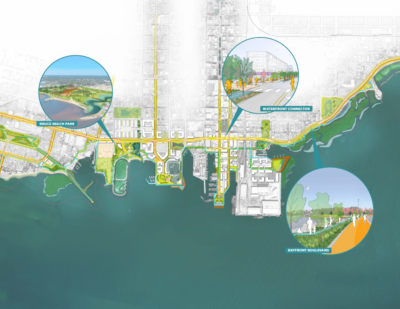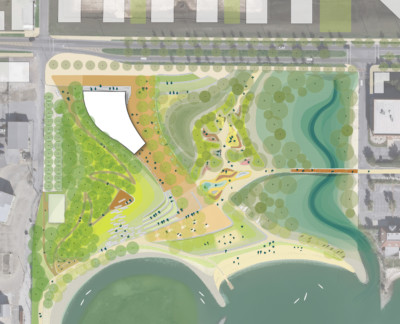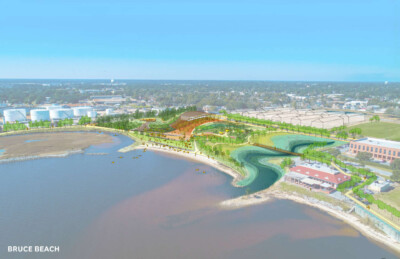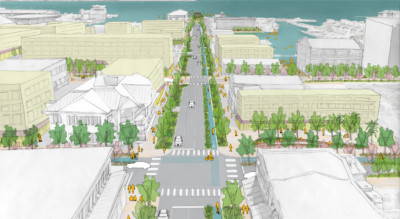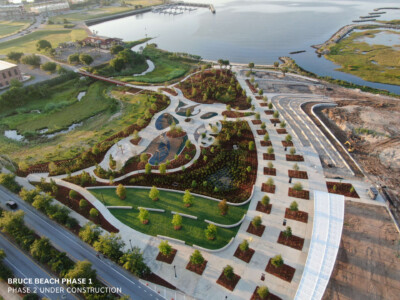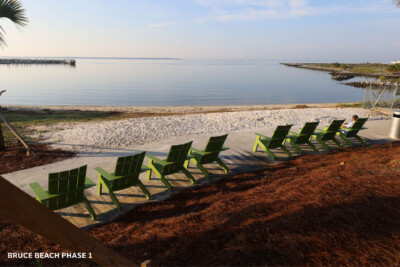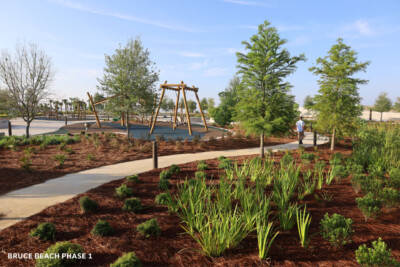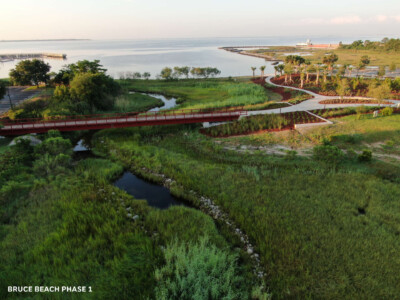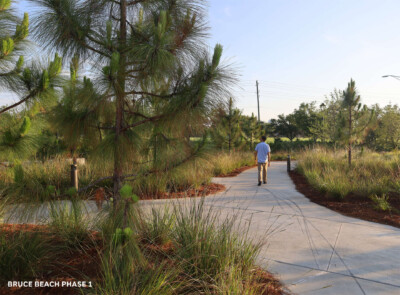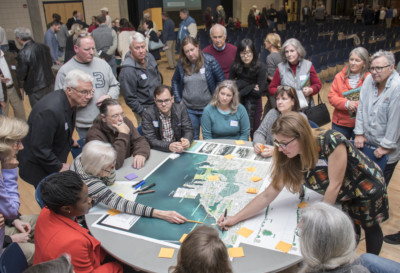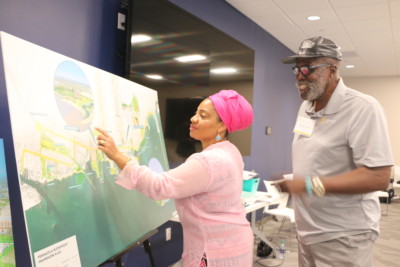In 2018, SCAPE created a framework plan for the downtown waterfront of Pensacola, Florida, including design concepts for two catalytic pilot projects. Following an initial research and analysis phase, SCAPE worked closely with local residents and experts to identify shared goals and priorities: creating a connected, accessible public realm along the water’s edge, solving for climate-related flood risk, improving urban circulation, and capturing value locally through parallel economic development strategies.
The first catalytic project is Bruce Beach—an historic African-American recreation area—that includes extensive marsh restoration, a range of multi-use recreational space, and an education center celebrating local history, culture, and bay ecology. SCAPE developed the concept design for the plan, shown here, and led community engagement and peer review of the final project. Local partners HDR led the park design through construction. SCAPE also led the design of interpretive signage that explores the industrial history and ecology of the site, as well as the significance of Bruce Beach for Black, Indigenous, and Creole members of the Pensacola community. Phase 1 of Bruce Beach is now open for public use with Phase 2 completion expected in fall of 2024. Further east, a second catalytic project, dubbed the Hashtag Connector for its resemblance to the symbol, proposes streetscape improvements that better connect the Downtown and Bayfront areas.
Client
- Quint and Rushy Studer (Framework Plan)
- City of Pensacola, Florida (Framework Plan & Bruce Beach)
Collaborators
Framework Plan Collaborators:
James Lima Planning + Development
—
Bruce Beach Collaborators:
HDR
Angela Kyle
James Lima Planning + Development
